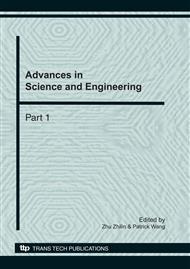p.705
p.711
p.717
p.722
p.727
p.733
p.739
p.744
p.748
Modeling Flight Dynamics of Tactical Missile with Morphing Wing
Abstract:
Morphing wings for winged tactical missile are gaining increasing concern for their potential to improve flight performance. However, morphing wings bring some new challenges to modeling flight dynamics due to movable components. This paper develops a set of complete nonlinear model, where some additional inertial terms are included. These terms account for the impact of morphing wing on flight states and make it difficult to study dynamic characteristics of missile. Therefore, a simplified model is deduced based on some reasonable assumptions. As a result, a longitudinal dynamic model is decoupled from the complete model. To verify the model, a numerical simulation is completed. The results show that the speed of wing changing has a notable effect on motion parameters during transition from one configuration to another, that is, the rapid wing changing means the larger amplitude and the higher frequency of motion vibration.
Info:
Periodical:
Pages:
727-732
Citation:
Online since:
November 2010
Authors:
Price:
Сopyright:
© 2011 Trans Tech Publications Ltd. All Rights Reserved
Share:
Citation:


